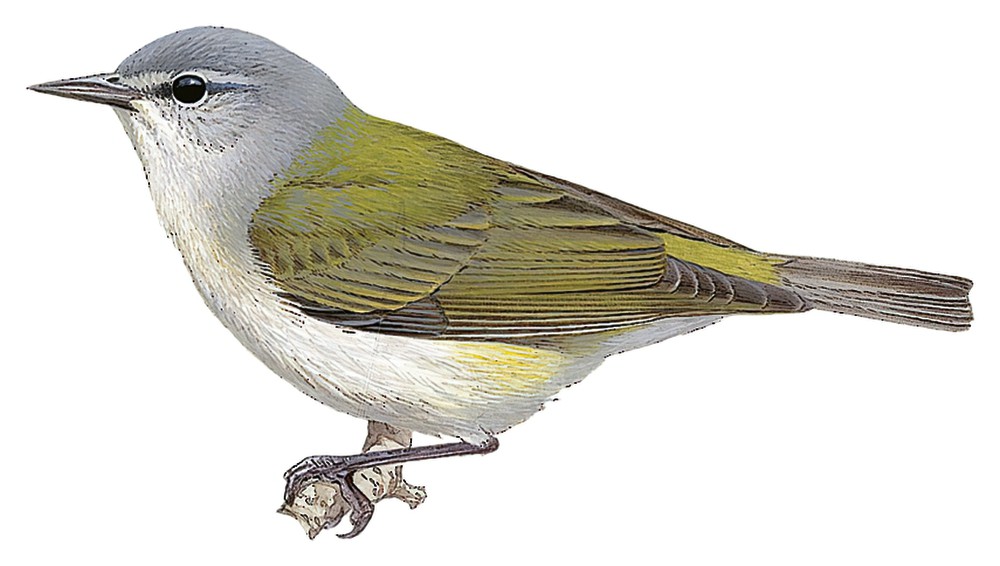Tennessee Warbler / Leiothlypis peregrina

Tennessee Warbler
SCI Name:
Protonym: Sylvia peregrina Am.Orn. 3 p.83 pl.25 fig.2
Taxonomy: Passeriformes / Parulidae / Leiothlypis
Taxonomy Code: tenwar
Type Locality: banks of Cumberland river, Tennessee.
Author: Wilson, A
Publish Year: 1811
IUCN Status: Least Concern
DEFINITIONS
LEIOTHLYPIS
(Parulidae; Ϯ Tennessee Warbler L. peregrina) Gr. λειος leios plain; θλυπις thlupis unknown small bird. In ornithology thlypis signifies either a thin-billed tanager or, as in this case, a parulid warbler. "No generic name has been proposed for the clade formed by the six 'plain' species ... Therefore, I propose a new genus taxon for this clade. Leiothlypis, gen. nov. ... Differs from Oreothlypis ...in plain plumage without black markings on the head, upperparts and underparts. Differs from Vermivora ... in the plain head and wing pattern ... The name Leiothlypis is derived from the Greek λειος, meaning plain, and the Greek θλυπις, the name of a kind of finch said to be found in the codices of Aristoteles (Stejneger 1884). The gender of the name Leiothlypis is feminine" (Sangster 2008).
Var. Leiothylypis.
peregrina
L. peregrinus foreign, strange, wanderer < peregre in a foreign country, abroad < per through, by way of; ager land < Gr. αγρος agros country.
● "3) Der fremde Grauammer. Miliaria peregrina, Br. ... Er besucht unsere Gegenden selten und nur im Winter, ähnelt in dem Betragen und der Nahrung den Verwandten, und nistet wahrscheinlich nicht in Deutschland."(Brehm 1831) (syn. Emberiza calandra).
● "SYLVIA PEREGRINA ... As this species is so very rare in the United States, it is most probably a native of a more southerly climate, where it may be equally numerous with any of the rest of its genus. ... Particular species of birds, like different nations of men, have their congenial climes and favorite countries; but wanderers are common to both; some in search of better fare; some of adventures; others led by curiosity; and many driven by storms and accident" (A. Wilson 1811) (Leiothlypis).
● "3) Der Wandergimpel. Pyrrhula peregrina, Br. ... Er scheint dem Norden anzugehören — in die hiesige Gegend kommt er gewöhnlich erst im October und brütet nur höchst selten in unsern Wäldern — bringt den Winter in Deutschland oder südlich von uns zu" (Brehm 1831) (syn. Pyrrhula pyrrhula europaea).
● ex “Torchepot du Canada” of Brisson 1760, and “Sitta peregrina” of Bartram 1791 (syn. Sitta canadensis).
UPPERCASE: current genus
Uppercase first letter: generic synonym
● and ● See: generic homonyms
lowercase: species and subspecies
●: early names, variants, mispellings
‡: extinct
†: type species
Gr.: ancient Greek
L.: Latin
<: derived from
syn: synonym of
/: separates historical and modern geographic names
ex: based on
TL: type locality
OD: original diagnosis (genus) or original description (species)












